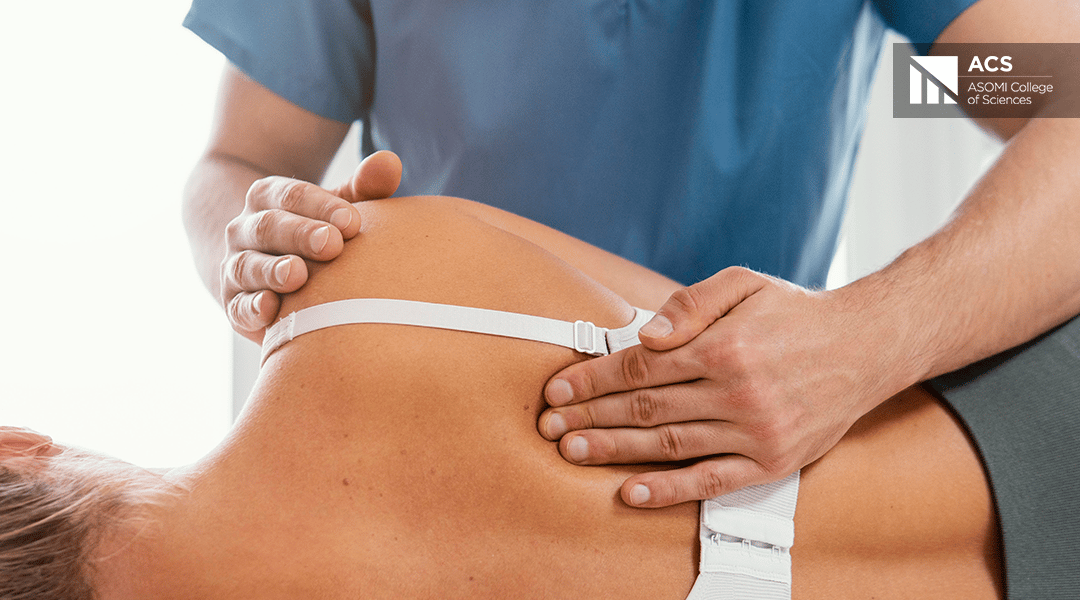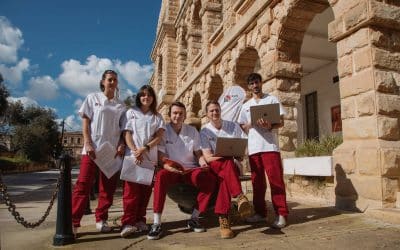The current verion is the second part of the article and it includes also the references. Click here for the first part of the article.
About the author: Robert Lever is a highly skilled osteopath with more than 40 years of experience in holistic osteopathy. He is a lecturer at European School of Osteopathy, Maidstone, UK teaching the Principles of Osteopathic Practice.
Coherence
As time goes on, I find it increasingly difficult to speak of ‘structure’ and ‘function’ as separate entities; in essence, they are one and the same, (‘living’ structure is functioning.), though, as osteopaths, we might simplistically conceive of ‘structure’ as that that is manually accessible.
However, the feature that is relevant to both these facets of the body is that healthy function is dependent on adequate levels of coherence. The interactivity of all structures and functions reflects degrees of coherence, reciprocity, integration, and reasonable levels of harmony for a healthy operation to be present.
How does this express itself and present itself to the trained observer and the palpating hand? In a strange way, when all is well, it is strikingly unremarkable! As Professor Korr (1976) described decades ago, a good-functioning body resembles a well-drilled brigade of soldiers; all are patterned and harmonious. But it is the soldier ‘out of step’ who is conspicuous, presenting disharmony and destroying the patterned coordinated order of the whole brigade. In Korr’s characteristically eloquent way, he provides us with an engaging metaphor. As osteopaths, we observe and palpate patterns of motion, motility, balance, and reciprocity in relation to functioning anatomy along with its relevance to physiology and wider aspects of function and experience for the individual. Some of these relate to psycho-emotional and even spiritual levels of experience.
Vital potential and self-regulation
But this preoccupation with coherence needs further elaboration in order to bring us closer to Still’s entreaty in ‘finding health.’Yes, to integrate and to harmonize structural function does assist the body in its attempts to generate vitality and health. Moreover, integrative forms of treatment (such as the ‘Body Adjustment’ approach of classical osteopathy) are valuable therapeutic procedures that work to achieve this goal.
However, in addition, most osteopaths (of all complexions) espouse a vital principle; a notion eclipsed for decades by scientific and medical theorists but which is beginning to emerge once more into scientific discourse. It is a notion that links the quality of ‘vitality’ to a vital ‘potential’ relating to the body’s capacity for self-regulation and repair (an expression of a vital force in nature). In this respect, we implement osteopathy as a means of facilitating its expression in the patient. In addressing ‘the lesion’ (even the ‘total lesion’), we might claim to reduce or remove impediments to this process. But in the 1960s, two very different osteopaths added something interesting.
Rollin Becker (1963) wrote famously of ‘the eye of the storm’, a bioenergetic focal point in the body that harnesses the energy of the total lesion and is, holistically speaking, the key to its resolution. And Thomas Dummer (1995) who is developing an exquisitely precise, minimally invasive treatment approach (known as ‘Specific Adjusting Technique’) promoted the notion of a bio-mechanical focus within the total structural lesion that similarly held the potency of the whole-body pattern (virtually holographically). And therefore, he constituted the most potent point of access and, in the same way, the key to the process of resolution in any given moment.

Holistic treatment
It is interesting that the treatment methods that are overtly or conspicuously integrative on the one hand, and the ‘minimal’ treatment approaches that stimulate the body to generate integration and coherence for itself on the other, would appear to be polarised as approaches within the osteopathic spectrum. Indeed, this has caused much argument and division in the profession over many years.
But what is absolutely crucial is that both methods emphasize holistic function and integration as being fundamental to the therapeutic objective: the enhancement of coherence and health. Within each approach, there may well be linear palliative measures that are essential or expedient (such as targeted drainage and articulatory techniques, fluid drives, inhibition, to name a few examples). But there can be little doubt that when ‘systemic’ holistic osteopathy facilitates the restoration of coherence and the body’s relationship with its homeostatic faculties that supports the process of self-repair, the body ‘comes back to itself’ to function more harmoniously within itself and in the relationship with its ecosphere, its environment, and its wider world. This is where its capacity to experience ‘health’ surely lies.
Health as intrinsic harmony
Whether working ‘structurally’ or using ‘functional’ or ‘cranial’ models, fluency and fluidity are palpable in which the absence of abnormal strain patterns and the lack of abnormal levels of irritability (raised facilitation) join normal tissue tone and texture and healthy circulatory dynamics to provide a sense of harmoniously integrated function, rhythmicity, and flow. Assessing musculoskeletal mobility and craniosacral integration quickly reveals conspicuous abnormalities, turbulence, eccentric motion axes, depletion of tissue energetics, abnormal force vectors, and poor fluid dynamics and their effects on vitality both locally and systematically. All may contribute to a sense of fragmentation and de-coherence that might be mild or severe. We learn to construct treatment strategies that engender the recovery of coherent patterning, for it is only then that the generation of patterns of health can be reinstated satisfactorily. Systems biology is beginning to emphasize both the multifactorial nature of ill health (along with the multi-directionality of ‘causes’) as well as the wisdom of an integrated treatment perspective as the most intelligent means of supporting the restoration of health for the patient. (Marcum, 2008).
In the end, health is not simply the absence of disease; it is the expression of an intrinsic harmony that permits each individual the ability to resonate with his or her sustaining environment on all levels: physical, psychological, social, and energetic. For many, this expresses itself spontaneously and unerringly. For others, the art of treatment can help to make it happen so that health can be reclaimed.
Some within our profession may struggle with the role I have expressed for vitalism in this scenario; that in contradicting mainstream scientific opinion, we continue to alienate our more orthodox colleagues over this. But the notion of vitality, whether in the cosmos or in living organisms, has a fine pedigree. Aristotle fathered the idea of this non-material force that supported and energized material things, and scientists and philosophers have articulated it in various ways ever since. In the modern era, the notion of a self-regulating power has a history that meets its finest expression in Walter Cannon’s principle of homeostasis (1932). While many would see this process as the spontaneous expression of the multiple feedback circuits in biological systems, others will impute, in addition, a driving force that has wide-reaching implications relating to the transduction of energetic forces in our ecosphere, the electromagnetic forces derived from our sun in the form of thermal and phonic radiation that govern our atmosphere, our water, our food chains and ultimately our metabolism. And to place the human and every other species within its ‘world’ in this contextual way is sure to define the milieu in which health is ultimately made available. Here, health is the product of a ‘dialogue’ rather than a unidirectional expression of living function.
Summary
So to ‘find health’ is ultimately about engendering coherence: that patterning of function that enables and supports integrated physiology that is resonant with its sustaining environment. It promotes integrative purpose in both structure and function which are, in the end, fundamentally entwined. The ‘health’ to which Still alluded is the liberation of a force whose nature we strive and struggle to understand, but just as the body ‘recognizes’ it, we ‘know’ it when we feel it – in its absence of turbulence, discord, and fragmentation and in its expression of something we call ‘vitality.’ Our professional role is to facilitate this expression, to enable it to pervade our patient’s entire being where it will orchestrate, regenerate and reconnect with the individual’s potential for the reclamation of health.
Becker, R, 1963, Diagnostic Touch: Its principles and application, AAO Yearbook.
Cannon, W, 1932, The Wisdom of the Body, New York, WW Norton & Co.
Dummer, T, 1995, Specific Adjusting Technique, Jotom.
Ingber, D, 2008, Tensegrity and Mechanotransduction, Journal of Bodywork and Movement Therapies 12: 198-200.
Korr, I, 1976, The spinal cord as the organizer of the disease process, JAOA 76: 35-45.
Lee, R P, 2005, Interface: Mechanisms of spirit in Osteopathy, Stillness Press.
Lever, R, 2013, At the Still Point of the Turning World: the art and philosophy of Osteopathy, Handspring Publishing.
Lever, R, 2016, Finding the Health: thoughts on osteopathic diagnosis & treatment, Handspring Publishing.
Lever, R, 2020, Mind, Matter, and Motion: Tradition and Innovation in Osteopathy, Handspring Publishing.
Levin, S, 1982, Continuous tension, discontinuous compression; a model for biomechanical support of the body, Bulletin of Structural Integration 8(2), 31-33, Rolf Institute.
Marcum, J, 2008, Cancer: complexity, causation, and systems biology, Seminar on causality, Models in Medicine, University of Geneva.
Nordenström, B,1983, Biologically Closed Electrical Circuits, Skarpnäk, Stockholm, Nordic Medical Publications.
Oschman, J, 2000, Energy Medicine: The Scientific Basis, Edinburgh, Churchill Livingstone.
Oschman, J, 2016, Energy Medicine: The Scientific Basis, 2nd edition, Elsevier.
Pienta, KJ & Coffey, DS, 1991, Cellular harmonic information transfer through a tissue tensegrity matrix system, Medical Hypotheses 34: 88-95.
Pischinger, A, 2007, The Extracellular Matrix and Ground Regulation, North Atlantic Books.
Still, AT, 1892, Philosophy and mechanical principles of osteopathy, republished 1986, Osteopathic Enterprise.
Szent-Györgyi, A, 1988, To see what everyone had seen, to think what no one has thought. Biol. Bull. 175, 191-240.




